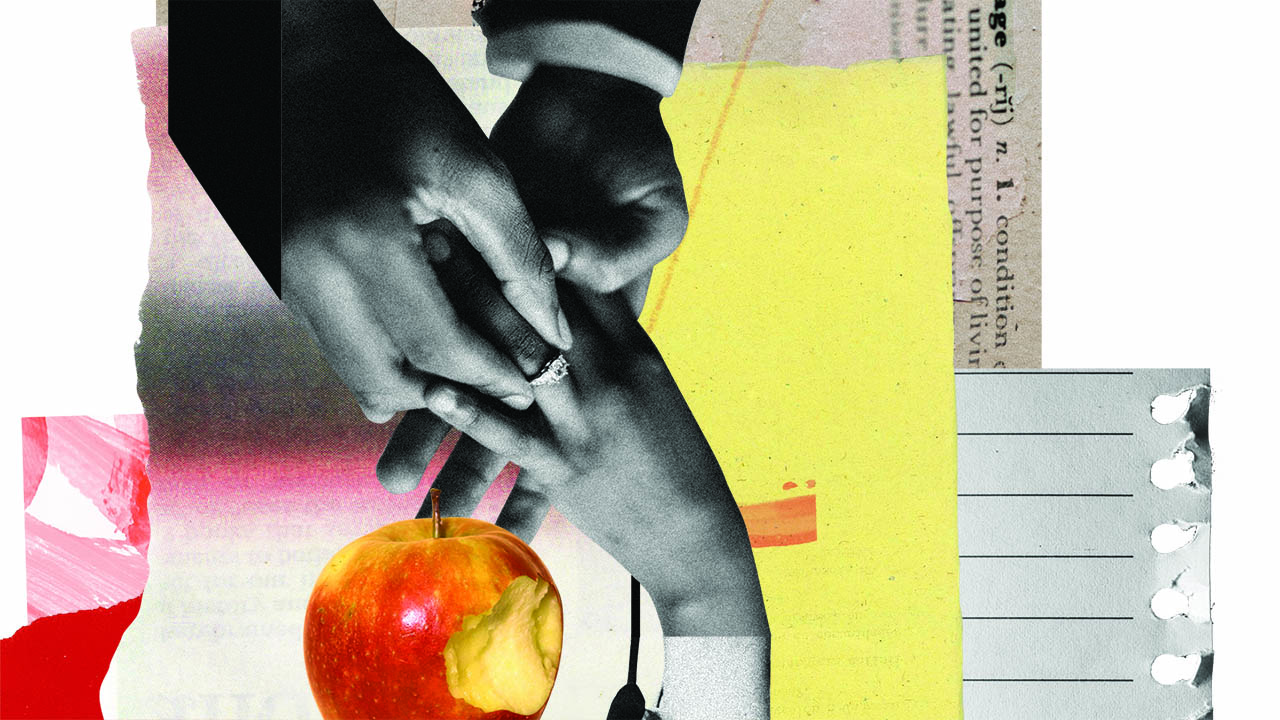Becoming the Pastor’s Wife:
How Marriage Replaced Ordination as a Woman’s Path to Ministry
by Beth Allison Barr
(Brazos Press)
“The thing is, women are not all gifted in these same ways. When we create a ministry role that is so tied to a particular type of gifts and a particular type of way that women in these roles are supposed to act and present themselves, then we are stifling women. And we are hurting the church by offering this role as the primary model for what women who are called to ministry should be.”
—Beth Allison Barr
“So, you have a career that’s different from your husband’s. How is that not going to detract from the ministry calling?”
That’s the question a pastor’s wife asked Beth Allison Barr during the hiring process for her husband’s role as youth pastor. Though Barr’s understanding of it would evolve more with time, the underlying belief behind the question was clear: Barr’s husband’s role was of primary importance. What she did should support that.
The role of the pastor’s wife is not only a deeply personal one for Barr, but a topic of scholarly interest and expertise as well. In Becoming the Pastor’s Wife: How Marriage Replaced Ordination as a Woman’s Path to Ministry, Barr, who is the James Vardaman Endowed Professor of History at Baylor University, traces the role throughout history, considering the shifts in biblical interpretation and culture that have led to its narrowing role specifically within white evangelicalism.
Earlier this month, Barr spoke with Common Good about how the role of the pastor’s wife has and hasn’t empowered women, about the history of female church leadership and the opportunities awaiting congregations today.
You describe the book as “the history of how Christian women gained a new and important leadership role,” but also “the history of how this gain came at a cost for women too.” Both the cost and gain, you say, are “bigger than we’ve yet realized.” How so?
I don’t attempt to describe every iteration of the pastor’s wife role — and, in fact, in writing this book I realized how significantly different they can be even within the United States. Within the white evangelical space, the pastor’s wife role offers a great opportunity for women, especially women who are gifted in the particular ways that fit with the expectations of the role — that more behind-the-scenes person who likes to fill in the gaps.
But the thing is, women are not all gifted in these same ways. When we create a ministry role that is so tied to a particular type of gifts and a particular type of way that women in these roles are supposed to act and present themselves, then we are stifling women. And we are hurting the church by offering this role as the primary model for what women who are called to ministry should be.
How does your academic background in medieval history and women’s history shape your understanding of where we are right now in white evangelical churches?
It gives me perspective. When people say things like, “Well, women have never been able to lead in the church,” or “Women have never been ordained,” or “First Timothy 2 has always been interpreted in this particular way” — as a historian I can look at them and say, “No, it has not always been interpreted this way.”
I know even more so after having read 150 pastor’s wife books for this project that there is a particular turn that happens in the 1980s, in which the pastor’s wife role becomes more narrowly defined and pushes out women who are gifted in other ways. My training as a historian has helped me to see that the way we conceive of the pastor’s wife role today is a culturally constructed identity, and it has not always been this way.
Can you expound on the connection between and consequences of the decline in female ordination and the rise of the pastor’s wife role?
The one thing that I didn’t really cover in The Making of Biblical Womanhood was ordination. It was in the back of my head but a book like this, while it is a history book, it’s a particular type of history book that connects to a big overarching story to help people see how it fits. I didn’t know what that story was.
I was reading Into the Pulpit: Southern Baptist Women in Power in the Post-World War II Era by one of my colleagues at Baylor, Elizabeth (Betsy) Flowers. She was talking about the rise of the conservative resurgence in the Southern Baptist Convention, which is the fundamentalist takeover in the late 1970s and 1980s that began to push women out.
The two components of the resurgence were inerrancy, or biblical literalism, and gender hierarchy. So, I was reading Flowers’ discussion of the rise of the conservative resurgence, and I saw that the women who were joining this fight for the conservative resurgence were pastor’s wives. They were particularly speaking out against women’s ordination. That was really when I thought I may have something more to say and I began doing the research that became Becoming the Pastor’s Wife.
What did you find about that connection between being pastor’s wives and advocating for a conservative resurgence?
On the one hand, the role of the pastor’s wife is born in the Reformation. If somebody tells you the role of pastor’s wife has always been this way in the Western church — no. There have been married clergy in the West much longer than I think people realize. Married clergy never completely went away even among Western Catholics, but spouses were not conceived of in the same way we see the pastor’s wife.
In the Reformation, the pastor’s wife herself became a symbol of resistance. A pastor choosing to be married and a woman choosing to marry a pastor was a symbol of the Protestant Reformation, or, as they termed it at the time, it was actually evangelical. In the early Protestant Reformation, to be a pastor, you had to be married. Marriage, for the first time, sort of became written into the job description of being a pastor — which meant that the pastor’s wife has a job too.
At this time there were still multiple roles for women. Women could marry a pastor and be influential in ministry, but that was not their only avenue toward ministry service.
In the book, I say the two roads went side by side. Women had more than one option. Even in the SBC, a role that became very full of women in ministry who were able to serve without husbands was the role of missionary single women. They were very successful and were becoming, essentially, these global preachers and pastors around the world.
It’s not until the aftermath of World War II, a time in which culture shifts significantly in trying to normalize itself, that in an effort to get men back into jobs — and therefore getting women back home to open up jobs — the pastor’s wife role becomes part of this narrative which says that to be a woman in ministry is to support a man in ministry.
We begin to see that narrative rise. There’s pushback against it — many women, in fact, who say, “No, I’m called to do this. I can go to seminary. I can get ordained. I can do all of these things.”
In the 70s and the 80s, we see these more conservative churches, like the Southern Baptist Convention, take steps to officially push back against the rise of women moving into ministerial roles that they believe should be reserved for men. That’s really the first time the pastor’s wife becomes this ideal model: She represents women actively serving in ministry while still supporting their husbands. I quote Kate Bowler who says that the pastor’s wife is “the safest ministry role.”
The pastor’s wife also begins to embody not just the role of pastor’s wife, but an ideal model of what other women in the church should do, too — that is, to follow suit by entering into a ministry role that is supportive rather than independent.
On being a pastor’s wife yourself, you write, “I was being mentored as a leader, but it was a carefully controlled type of leadership designed to embrace the godliness of female dependency and of male headship.” Can you give us an example of that?
If I wanted to go talk to the elders or the pastors or had a concern, I was always told that I needed to tell my husband and let him bring it for me, or that I needed to talk to some of the other pastors’ wives and let them bring it to their husbands for me. There was a clear separation. My influence was supposed to be indirect. It wasn’t my role to challenge or to bring something forward; it always had to be mediated. With that, too, came conversations about women in the Bible who served in these mediated roles. It was often noted that Sarah called Abraham ‘Lord.’
Toward the end of our time there, there was a sermon on gender roles. This woman who I knew — who was fantastic and I really respected her — she and her husband, who was a leader in the church, got up to give a testimony about marriage. She said: “Whenever you disagree with your husband you should just bite your tongue and say, ‘Okay, honey.’”
This was in front of the entire congregation. It was very clear — they were brought up together to share, and this was what she was supposed to share. This is the role of wives.
This draws artificial boundaries that are not in the Bible, to protect male power that women then have to enforce. It’s not only frustrating but it’s damaging — to the church and to women.
Can you tell us Milburga’s story and why it matters today?
In the early medieval era, Milburga’s mother wanted her to be trained to become an abbess, an ecclesiastical position, and then to preside over what would become a very powerful monastery in the seventh and eighth centuries. She was sent to France to be educated. They trained her up for it. The Archbishop of Canterbury actually consecrated (ordained) her.
The position Milburga took up was not simply a monastic position over a house of women. It is what we know as a double monastery — a house with a female superior, the abbess, who has authority over both the men and the women who live there. So she is a female clergy ordained into that role who then exercises spiritual care and pastoral authority over not only the lay men and women, but also the clergy in her establishment.
Let’s think about what the role of pastor really is. The word for pastor is not an office in the early church. It actually describes a function: shepherding. It’s only mentioned three times. The only offices that we see mentioned are that of presbyter, deacon, and episcopal bishop. In the role of abbess or abbott in the early medieval world was the bishop.
So Milburga is not just being raised up to take over a church and exercise pastoral care, which includes teaching authority, pastoral care duties, and spiritual care for the women and men. In some ways, she is actually moving into the highest ecclesiastical office available at the time. In the one depiction of Milburga we have from the early medieval world, she is holding a crozier — a shepherd’s hook — which is a symbol of ecclesiastical authority. She’s not the only woman who wields it. It is not hard to find examples of these types of women. There are a lot of them in the medieval world.
Milburga is a clear example of how the church has not always been the way that the conservative white evangelical world thinks. There was a time when women were seen as spiritual leaders and men recognized the calling.
Many Common Good readers are pastors, ministry leaders, or volunteers in their congregations. What do you hope they’d specifically take away from either the interview or the book?
I would hope that they would think about how their churches constrain women in ways that aren’t biblical or necessary. Why in the world do pastors want to say that half of their population in the church is limited to a very narrow job description without any attention to their gifting or their callings? Doing so also takes the other half of the population — all these men who may not be gifted in, called to, or desirous of leadership — and forces them into those positions. With such a narrow role for women in the church, the congregation is not only limited, but weakened. It does not allow people to live into the gifts that God has given them.
I really hope readers would hear this, even if their immediate response is, “But no, that’s what the Bible says.” I just want them to think about why they think that, and to really go back and look at that evidence. Is that really what you see women in the Bible doing?
If the true talents of the church are allowed to flourish however God calls, maybe we can witness a better future. I’m still naive enough to believe that that’s possible.
Becoming the Pastor’s Wife: How Marriage Replaced Ordination as a Woman’s Path to Ministry by Beth Allison Barr is available from Brazos Press on March 18, 2025.






